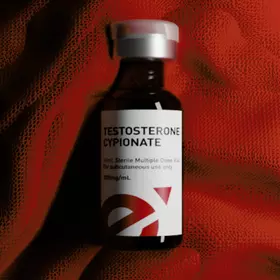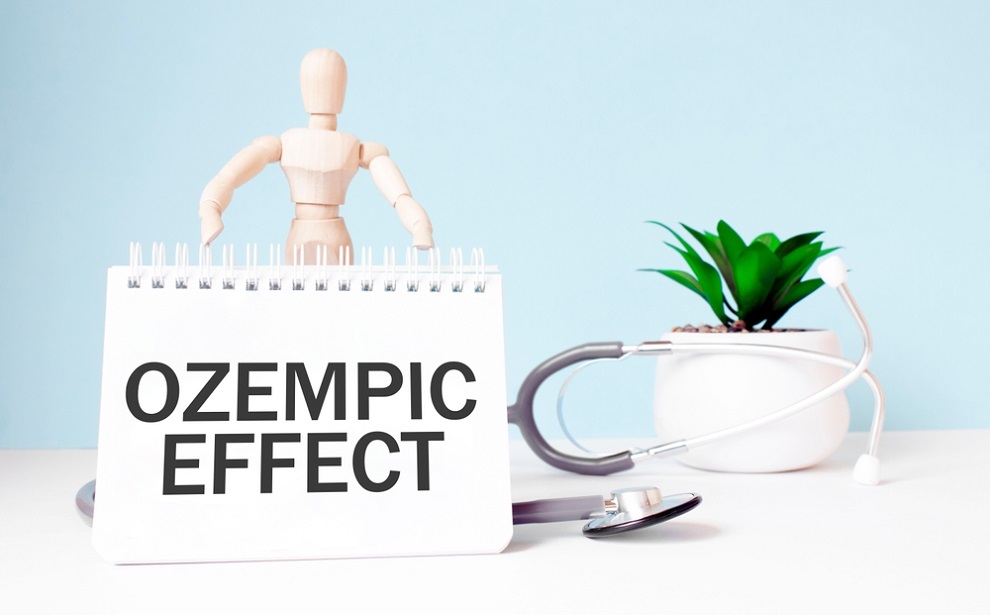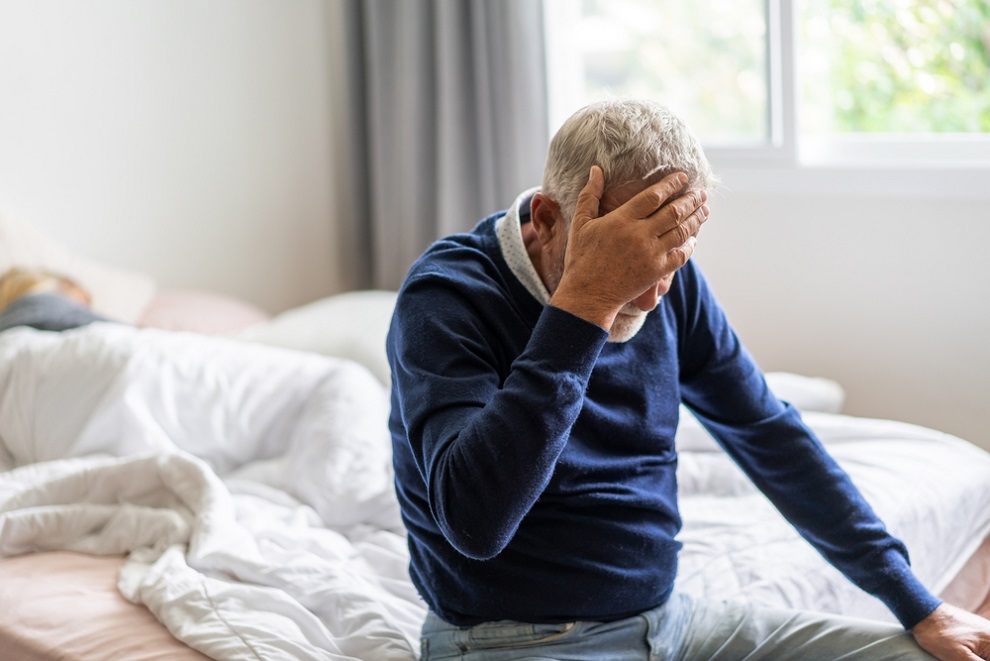The fight against a receding hairline is an age-old battle. Androgenic Alopecia, or male pattern baldness, affects more men than you might think. That sinking feeling when looking in the mirror after a fresh haircut to find that your hairline has retreated another inch is quite common. However, there's a way to slow the progression of hair loss and grow your hair back to suit your goals. It's called Propecia, and we'll explore this medication in the article.
What is Hair Loss, and Why Does it Happen?
The loss of hair volume or alteration in the pattern of hair is common as we age. However, it has an earlier onset and is notably more prominent in men: about two-thirds of the male population experience hair loss during their lifetime. This is due to a combination of hormonal (dihydrotestosterone or DHT) and genetic factors that cause the shrinkage of the hair follicles.
Hair follicles are tiny spaces in your scalp from which hair strands grow, so once they begin to shrink, it causes the formation of thinner and finer hair. Eventually, these hair follicles are lost, marking the onset of hair loss. This condition is commonly referred to as male pattern baldness or Androgenetic Alopecia, and typical onset occurs in the mid-30s. Still, in some cases, it may begin as early as the early 20's or teenage years.
Hair loss usually begins in one of two ways:
- The development of an 'M' shaped hairline, which gradually retracts.
- A circular bald patch at the crown of the head that progressively gets wider and advances forward.
Regardless of how it begins, the end stage of androgenetic alopecia typically results in a thin band of hair around the sides and back of the head, with no hair present at the top or front of the head.
Genetically, hair loss is caused by the AR gene, which is responsible for producing androgens. Studies show that men with the AR gene are twice as likely to experience hair loss.
Androgenetic alopecia can be easily recognized and rarely requires a professional diagnosis. However, if you are experiencing swelling, redness of the scalp, bleeding, or pus formation, be sure to contact your healthcare provider to rule out any underlying scalp conditions that could be contributing to your hair loss.
Other causes of hair loss include Telogen effluvium, a stress-related condition that causes hair strands to fall out in large clumps from hair follicles. This type of hair loss is aggravated by periods of heightened stress, such as medical anxiety or other life-threatening illnesses.
What is Propecia?
Propecia is a brand name for the medication finasteride. It is primarily used to treat male pattern baldness, which is a common condition characterized by hair loss in men. Finasteride works by inhibiting the action of an enzyme that converts testosterone into dihydrotestosterone (DHT), a hormone that can contribute to hair loss.
Why is Propecia The Best Solution For Androgenetic Alopecia?
Treating androgenetic alopecia might seem daunting, but rest assured, your hair growth is possible. Considering the permanent and blatantly obvious nature of the condition, men and women take drastic measures to regain or, at the very least, maintain their hairline; however, there are only so many concealing measures that one can undertake.
Some available treatment methods include hair transplant procedures, which revitalize new hair follicles, facilitating hair regrowth. However, it is not a solution many people go for, given its cost and the uncomfortable recovery period. So, if you are looking for a less painful and more cost-effective solution, Propecia, an FDA-approved medicine, is a good bet.
Propecia is a drug that arrests the progression of androgenetic alopecia and facilitates hair regrowth to a noticeable extent. Finesteride gained approval in 1997 when they made the scientific breakthrough regarding the effects of finasteride, the powerful active ingredient in Propecia. This medication isn't the only finasteride-containing drug used to prevent hair loss, and other medications like minoxidil topical solution is also a popular alternative. Both finasteride and minoxidil are highly effective, clinically-proven treatments for hair loss in men
However, of all the drugs that contain finasteride, Propecia is the most effective in the battle against hair loss, with approximately 90% of users experiencing enhanced hair growth. This highly potent drug functions by slowing down the progressive nature of male pattern baldness. It is currently available as an oral medication in tablet form, unlike minoxidil, which is an ointment for the scalp.
How Does Propecia Work?
As mentioned earlier, a major cause of hair loss is the hormone dihydrotestosterone (DHT). This probably sounds like a mouthful when compared to the usual sex hormone, testosterone, we hear about all the time. Simply put, dihydrotestosterone is a chemical modification of excess testosterone in your blood. The details of this process are slightly complex, but it effects an enzyme known as 5 alpha-reductase.
Once formed, DHT leads to decreased blood flow to the hair follicles. Reduced blood flow results in the follicles shrinking and a reduction in number. Interestingly, the formation of DHT occurs in everyone, male and female, albeit to different degrees. However, people suffering from androgenetic alopecia are highly sensitive to this hormone. This level of sensitivity is a function of the AR gene, which we mentioned earlier. While Propecia cannot alter genetic predisposition, it can block the body's response to DHT through its active ingredient - finasteride.
Finasteride is a chemical agent classified as a 5 alpha-reductase inhibitor (5ARI). These compounds block the enzyme 5 alpha-reductase, which converts testosterone into dihydrotestosterone (DHT). When finasteride inhibits this enzyme, it reduces the amount of DHT produced by the body. The result is a decrease in the damaging effect of DHT on hair follicles and a slowdown in hair loss.
Finasteride was initially a medication to treat benign prostate hyperplasia (BPH), another male condition aggravated by DHT. However, it wasn't until 1997 that they discovered its potential to treat hair loss. Finasteride is a tested and trusted treatment for male pattern hair loss. However, it may cause side effects, which we will discuss later in this article.
How Effective is Propecia?
The short answer is 'very'. Before launching this medication, there was extensive research on its effects on hair growth. In its developmental phase, finasteride was tested on large numbers of men of varying ages and races. At the end of every test, the effectiveness of this game-changing medication was proven beyond any doubt.
Finasteride demonstrated rapid effectiveness in halting the production of dihydrotestosterone (DHT). Researchers observed that men using this medication for more than a decade didn't undergo any additional hair thinning or loss. Their hair density remained stable.
This is because the medication prolongs the anagen (growth) phase of the hair cycle and delays the regression period. Since its FDA approval, only a few hair loss prevention medications rival Propecia.
How Long Does it Take for Finasteride to Work?
Once administered, finasteride immediately arrests the production of DHT in the body. Dermatologists have noted that it takes several months before physically noticeable changes may appear. Based on these dermatology studies, some evident signs of finasteride taking effect include
- A reduction in the volume of hair loss during wash days, showers, or when combing through hair.
- Improvement in hair density and hair feels fuller to the touch, indicating hair growth.
Bear in mind that finasteride doesn't completely stop hair shedding since it's a natural phase in the hair growth cycle. However, consistent use of the drug significantly reduces unnecessary shedding and hair loss. It's important to manage expectations when using Propecia. Hair regrowth doesn't happen overnight. It typically takes several months to see noticeable improvements, as the hair growth cycle is a gradual process.
Does Finasteride Have Any Side Effects?
Just like with every drug, finasteride has side effects. Some include skin rash, itching, hives, and swelling of the face area, tongue, lips, or throat. Some users experience a change in sex drive or libido, erectile dysfunction, and testicular pain. If you experience these side effects, you should check with your doctor, especially if they become uncomfortable. If you notice any changes in breast tissue, no matter how slight, report it to your doctor. In the meantime, stop using Propecia or any other drug containing finasteride immediately.
There are some conditions where Propecia or other finasteride-containing drugs may not be suitable. These conditions include
- Pre-existing or predisposition to liver disease.
- Allergy to finasteride.
Note women battling alopecia should avoid using finasteride while pregnant or attempting to get pregnant.
It is also important to note that the medication might interfere with prostate cancer screening. If you are using this drug and have a laboratory test for prostate cancer scheduled, mention it to your doctor. Finasteride may increase the risk of more aggressive prostate cancer, so a proper evaluation by your doctor is crucial.
How Do I Determine My Propecia Dosage?
Propecia is a prescription drug not provided over the counter, unlike Minoxidil, an alternative drug for treating hair loss. Thus, your physician or healthcare provider will determine the appropriate dosage after evaluating and diagnosing your condition.
It is important to present your physician with an accurate health history, including smoking, alcohol consumption, and illegal drugs. Any of these may interact with your medicine.
If you miss a dose, take it as soon as possible just wait till the next one. Do not use a double dose to make up for the missed dose.
What are Alternative Treatments for Male Pattern Baldness?
As mentioned earlier, Propecia is not the only medication for androgenetic alopecia or those who struggle with hair growth. Other treatments that have proven to be effective include:
- Minoxidil Topical Solution: Unlike the orally administered Propecia, this over-the-counter medicine is only for external use. It is available without a prescription. Applied to dry hair and scalp, Minoxidil works within two to four months of consistent application.
However, consistent application of minoxidil topical solution is important. Hair that regrows whilst on the medication typically falls out within 3 months of disuse. Minoxidil topical solution may have some side effects. These include burning of the scalp, facial hair growth, acne at the site of application, and swelling of the face.
- Platelet-rich Plasma (PRP): This blood extract is obtained by spinning blood in a centrifuge until its components separate. Once PRP is formed, it can be injected into the scalp to promote hair growth by using platelets to improve tissue function.
Some side effects of this mode of treatment include pain in the scalp, vomiting, and nausea.
- Hair Transplants: This includes grafting skin from areas with healthy hair follicles to the scalp to fill in the balding and thinning areas. It is a typically long and painful procedure; however, it is a more permanent solution that dramatically affects hair regrowth.
The side effects of this procedure include irritation and pain in the scalp, nausea, vomiting, and some possible scarring around the newly grafted scalp areas. Still, once hair grows on these skin graft patches, the scar becomes less visible.
Can Androgenic Alopecia be Prevented?
There are methods to prevent or, at the very least, delay the occurrence of androgenic alopecia. These methods include:
- Take Vitamin Supplements: The vitamins that contribute to hair growth are vitamins A, B, C, D, and E. Incorporating them into your diet would go a long way in preventing hair loss and encouraging healthy hair growth.
- Increase Protein Intake: Proteins play a role in maintaining healthy follicles and minimizing hair loss.
- Develop Healthy Stress Coping Mechanisms: Studies have shown that stress heightens the rate of progression of androgenic alopecia. So, finding a coping mechanism might help reduce hair loss.
Take an Active Role in The Treatment of Androgenic Alopecia
Male pattern baldness is not life-threatening in any capacity, and most men affected do not seek professional help. However, great hair, especially as you age, helps you look better and increases your confidence. As a condition affecting over 80% of men over 80, there's no shame in seeking help. Propecia treatment is one of the most effective ways to treat hair loss by reducing hormone levels that are responsible.

Get TRT Delivered
No queues, no waiting room and no inconvenience





